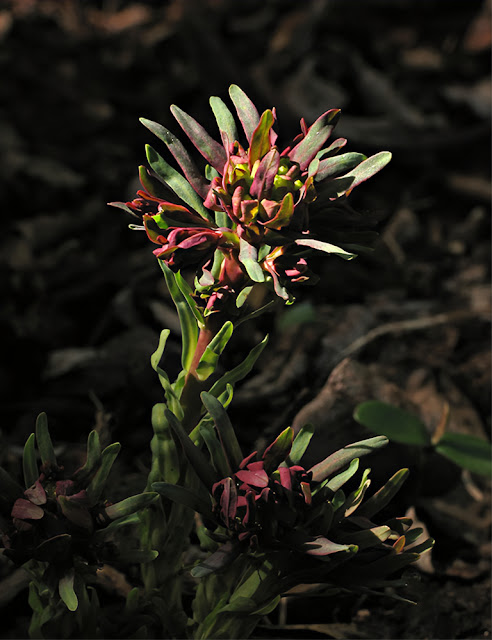Like the Raynox 150 and 250 the Canon 500D is an "achromatic close-up lens" (“achromat”). Achromats are made of two or more pieces of glass. This constrasts with "close-up filters" which are made of single pieces of glass. Close-up filters tend to suffer from sometimes quite severe problems of chromatic aberration and blurriness, especially away from the centre of the image. Achromats are much better on both counts, although they do vary, some in my experience being significantly better than others. I have found the Raynox 150, Raynox 250 and Canon 500D to perform well and for 10 years or so they were the mainstay of my close-up and macro photography even though I experimented with other approaches like macro lenses, extension tubes, teleconverters and reversed lenses. But when I was using the S3is that was all several years in the future.
So, as with my later cameras, and until very recently, my botanical images have been captured either with a zoom lens by itself (a fixed lens on a bridge camera, or an interchangeable zoom lens on micro four thirds or APS-C camera), or with the addition of a close-up lens, almost always a Canon 500D for botanical scenes. I have rarely kept notes of whether or not I was using a close-up lens for a particular shot or if I was which close-up lens it was. So for the following examples some would have been captured with the S3is by itself, and some with a Canon 500D attached. I doubt any of them would have used a stronger close-up lens.
A couple of things strike me about these. One is that right from the beginning of my photographic journey I was attracted to scenes where direct sunlight is falling on the subject but not, or not much, on its surroundings. The other is that although I was in a garden with lots of flowers I had discovered that there are other things to photograph like berries, seed pods and foliage. A decade later I am still attracted to pools of sunshine and to berries, seed pods and foliage. As well as flowers of course.
Click on an image to see a larger version









No comments:
Post a Comment